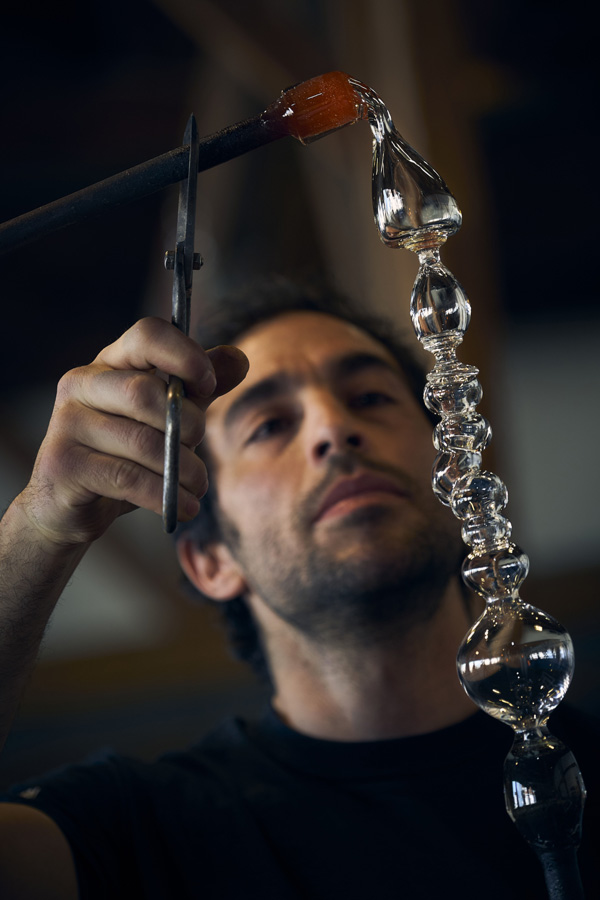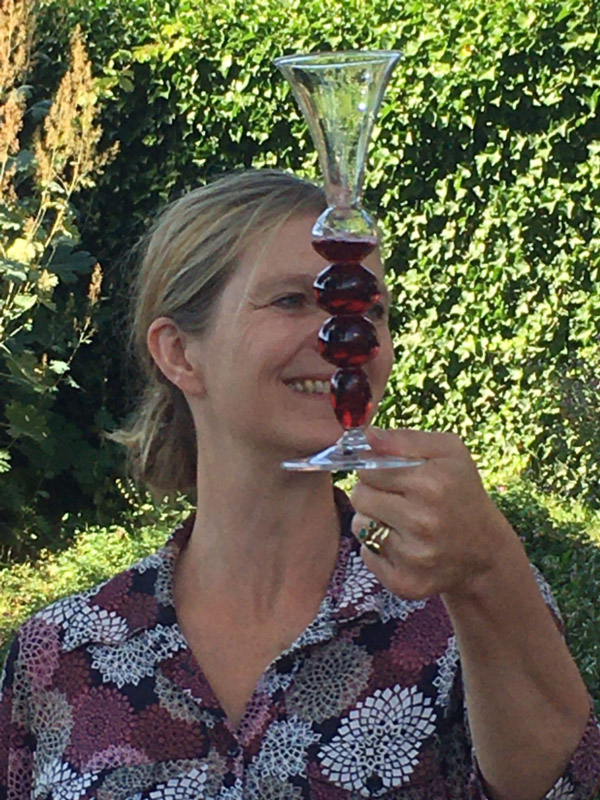Wheaton Conversations:
Marc Barreda & Kitty Laméris
with Alex Rosenberg & Mary Mills
Watch the April 18, 2024 recording above
Mary Mills and Alex Rosenberg host master glassblower Marc Barreda and glass expert Kitty Laméris, both of whom will be coming to us from the Netherlands. They will discuss their extensive research on European trick glasses, which culminated in their internationally acclaimed publication, Trick Glasses: Devious Drinking Devices.
Beginning in the late 1500s, glassblowers began making intricately designed vessels for drinking games. The trick often involved getting sloshed in the face or being coerced to drink to excess. Marc and Kitty conducted an unprecedented study of extant trick glasses in museums and private collections around the world. Kitty combed primary sources to provide a detailed cultural context for the objects. Marc used historically accurate techniques to replicate each type of trick glass. He coined the term “practical archaeology” to describe his investigative method of testing exact reproductions to understand how they functioned. We are grateful to Marc and Kitty for contributing to our new exhibition, Centuries of Tomfoolery: Trick Glasses, Pipes, and Whimsical Delights.
Closed captioning is provided.
This event is part of “Wheaton Conversations,” a virtual series highlighting a diverse community of Artists!
To see the full schedule of conversations, Click Here.
Wheaton Conversations is generously presented by PNC Arts Alive! and the Art Alliance for Contemporary Glass.

Marc Barreda (PERU/USA/NL, 1977). After receiving a bachelor’s degree in Biology from Williams College, Marc started a career in the arts, working as a mixed-media sculptor and training as a glassblower. He developed an understanding of glass by working for a variety of artists and by taking and assisting at classes at glass schools around the United States and Europe. This commitment to the medium opened a variety of doors for him, both domestically and abroad. In 2005, Marc made his first trip to Holland to help develop the Vrij Glas Foundation. In 2009, he moved to Amsterdam full-time to pursue a master’s degree at Sandberg Institute. His work is shown internationally and is housed in the collections of The Creative Glass Center of America, the Museo Nacional del Vidrio in Spain, the Nationaal Glasmuseum of the Netherlands, and elsewhere. Marc works with artists and designers to help realize their ideas in glass and teaches at the KABK in The Hague and at the Design Academy in Eindhoven. In the summer, Marc is also a commercial salmon fisherman in Alaska. Recently, together with his friend and collaborator Kitty Lameris, a glass expert and historian, Marc published a book that is the product of an ongoing fascination with Trick Glasses.

As the daughter of a glass antique dealer, Kitty Laméris has been intrigued with glass since childhood. She studied Italian language and literature at the University of Amsterdam (UVA) with a minor in art history. In the Amsterdam-Venice year 1991, together with her father and glass expert Frides Laméris, she was asked to organize an exhibition in Amsterdam about Venetian and façon de Venise glass, with around 140 glasses from private Dutch collections. Since then, she has mainly focused on this type of glass from the fifteenth, sixteenth, and seventeenth centuries. She researches, writes articles, and gives lectures on the subject, and teaches about it at the University of Amsterdam. Every now and then, a glass from that period even pops up on the television program ‘Tussen Kunst en Kitsch’ (the Dutch Antiques Roadshow), where she acts as one of the glass and tile experts.
Together with Marc Barreda, she guest curated for the 2022 exhibition “Breaking the Ice with Glass, Canons, Blue Balls, Fountains and Fantasy Animals” at the National Glassmuseum in Leerdam (Netherlands). In the same year, their book on the same subject came out in Dutch and was published by NAI010 in English: Trickglasses, Devious Drinking Devices. Together with Anna, Willem, and Trudy Laméris, she runs Frides Laméris Art and Antiques, which specializes in the arts of fire, such as glass and ceramics.

